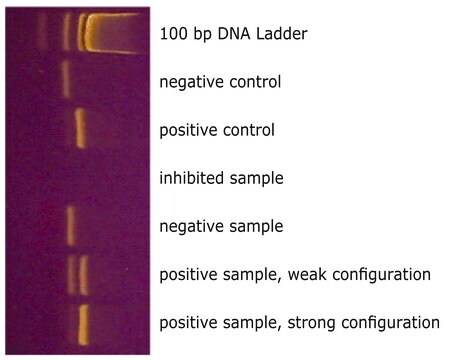MABS1915M
Anti-EGFRvIII Antibody, clone DH8.3
clone DH8.3, from mouse
Synonym(s):
Proto-oncogene c-ErbB-1, Receptor tyrosine-protein kinase erbB-1, Epidermal growth facttor receptor vIII
About This Item
FACS
IHC
IP
WB
flow cytometry: suitable
immunohistochemistry: suitable
immunoprecipitation (IP): suitable
western blot: suitable
Recommended Products
biological source
mouse
Quality Level
antibody form
purified immunoglobulin
antibody product type
primary antibodies
clone
DH8.3, monoclonal
species reactivity
human
packaging
antibody small pack of 25 μg
technique(s)
ELISA: suitable
flow cytometry: suitable
immunohistochemistry: suitable
immunoprecipitation (IP): suitable
western blot: suitable
isotype
IgG1κ
NCBI accession no.
UniProt accession no.
target post-translational modification
unmodified
Gene Information
human ... EGFR(1956)
General description
Specificity
Immunogen
Application
Signaling
Flow Cytometry Analysis: A representative lot detected EGFRvIII in Flow Cytometry applications (Johns, T.G., et. al. (2002). Int J Cancer. 98(3):398-408; Hills, D., et. al. (1995). Int J Cancer. 63(4):537-43).
Immunohistochemistry Analysis: A representative lot detected EGFRvIII in Immunohistochemistry applications (Jungbluth, A.A., et. al. (2003). Proc Natl Acad Sci USA. 100(2):639-44; Nishikawa, R., et. al. (2004). Brain Tumor Pathol. 21(2):53-6; Feng, H., et. al. (2014). J Clin Invest. 124(9):3741-56; Feng, H., et. al. (2012). Proc Natl Acad Sci USA. 109(8):3018-23.
Immunoprecipitation Analysis: A representative lot detected EGFRvIII in Immunoprecipitation applications (Lammering, G., et. al. (2004). Clin Cancer Res. 10(19):6732-43; Hills, D., et. al. (1995). Int J Cancer. 63(4):537-43).
ELISA Analysis: A representative lot detected EGFRvIII in ELISA applications (Johns, T.G., et. al. (2002). Int J Cancer. 98(3):398-408; Hills, D., et. al. (1995). Int J Cancer. 63(4):537-43).
Quality
Western Blotting Analysis: 4 ug/mL of this antibody detected EGFRvIII in 10 µg of U87MG.∆EGFR cell lysates.
Target description
Physical form
Storage and Stability
Other Notes
Disclaimer
Not finding the right product?
Try our Product Selector Tool.
Storage Class
12 - Non Combustible Liquids
wgk_germany
WGK 1
flash_point_f
Not applicable
flash_point_c
Not applicable
Certificates of Analysis (COA)
Search for Certificates of Analysis (COA) by entering the products Lot/Batch Number. Lot and Batch Numbers can be found on a product’s label following the words ‘Lot’ or ‘Batch’.
Already Own This Product?
Find documentation for the products that you have recently purchased in the Document Library.
Our team of scientists has experience in all areas of research including Life Science, Material Science, Chemical Synthesis, Chromatography, Analytical and many others.
Contact Technical Service






